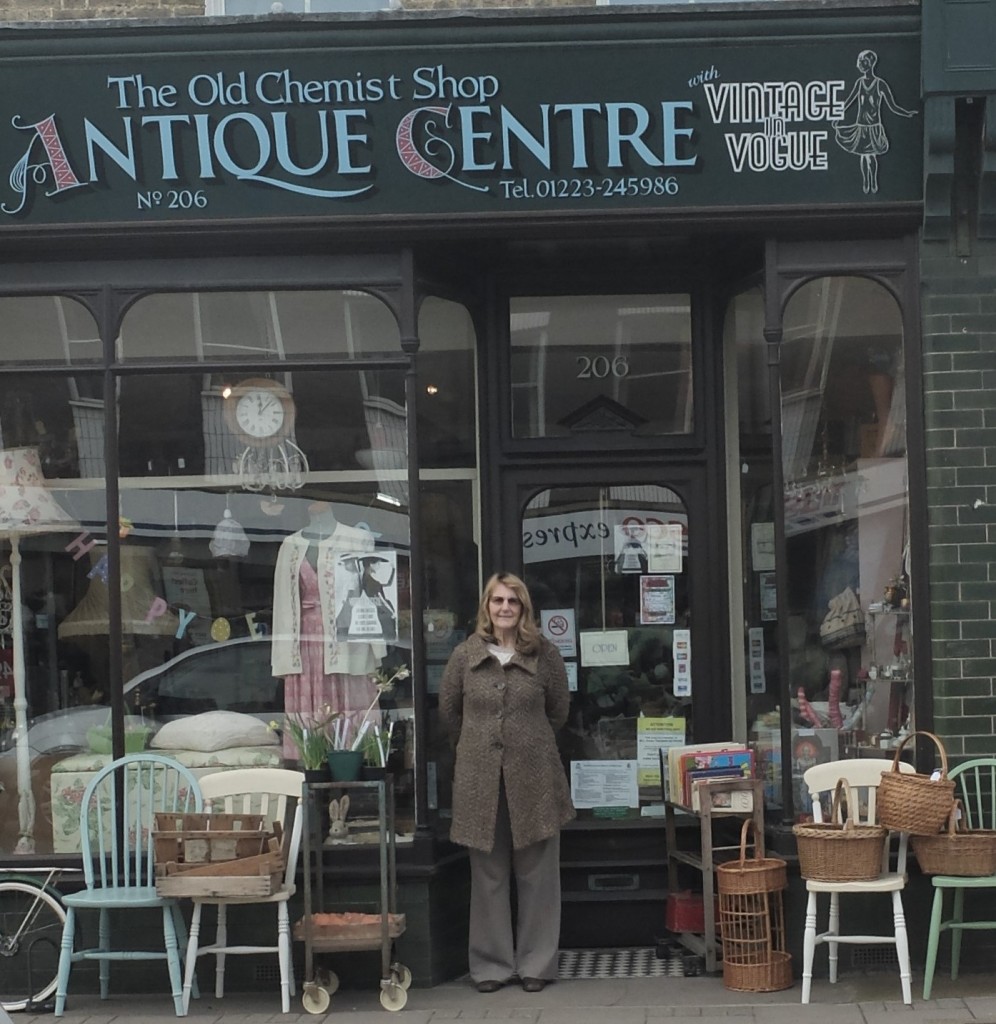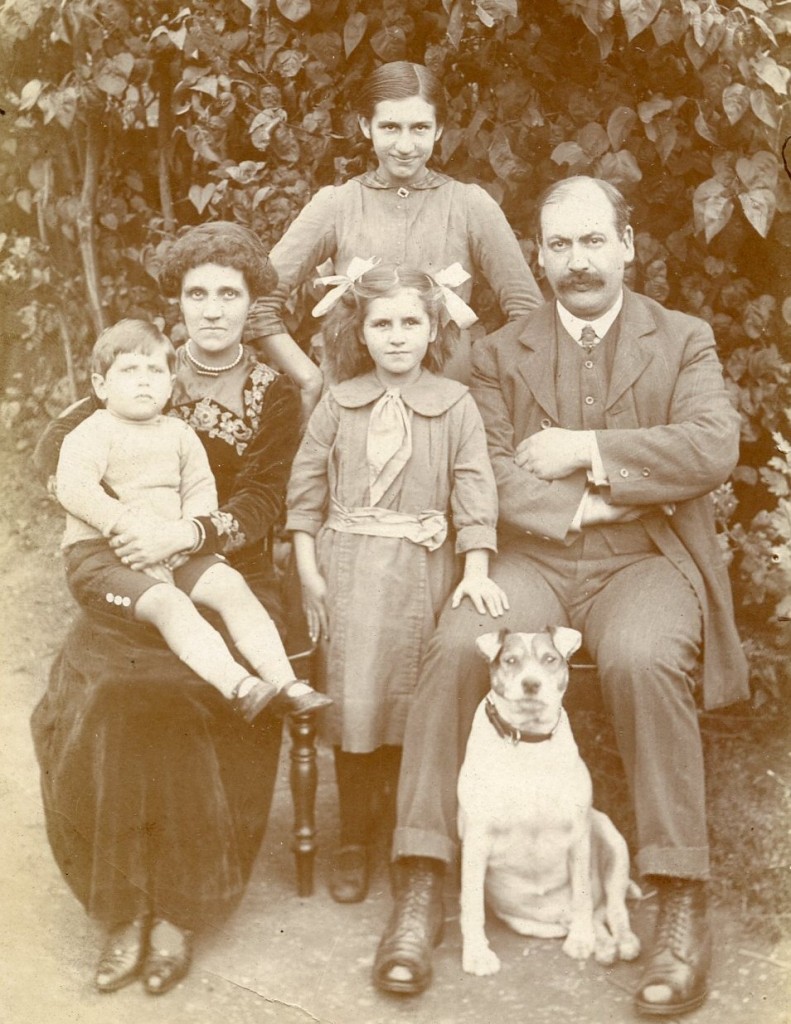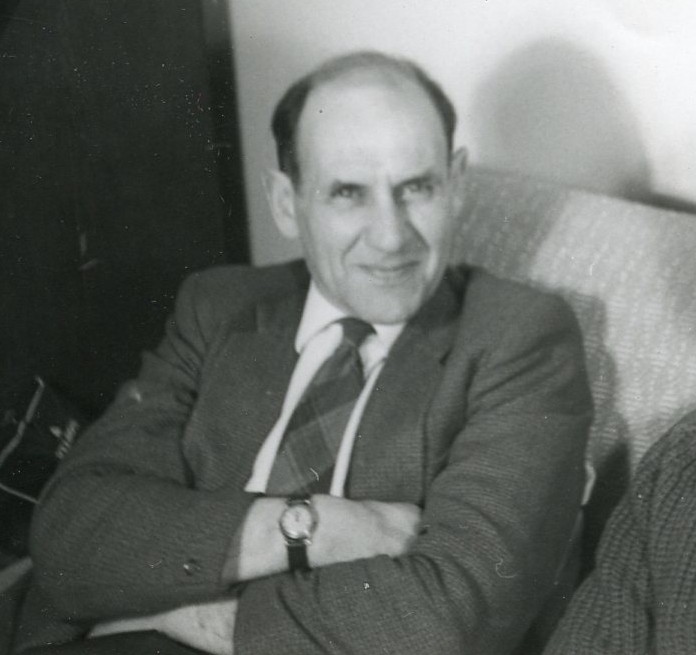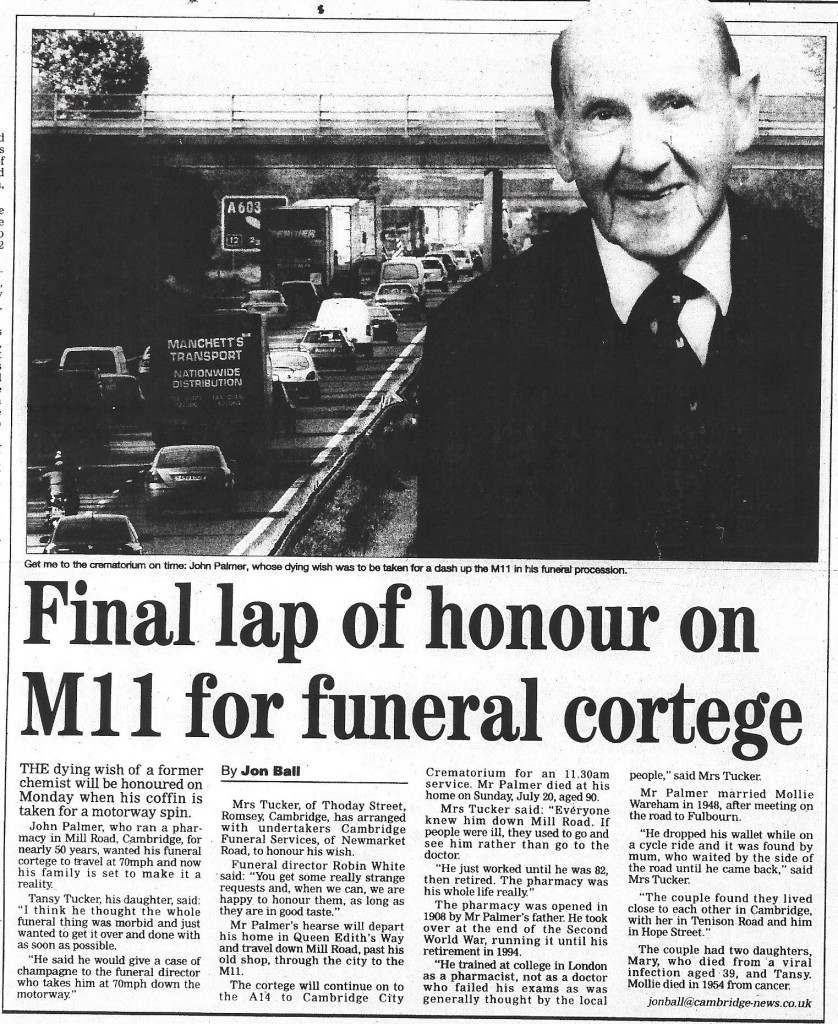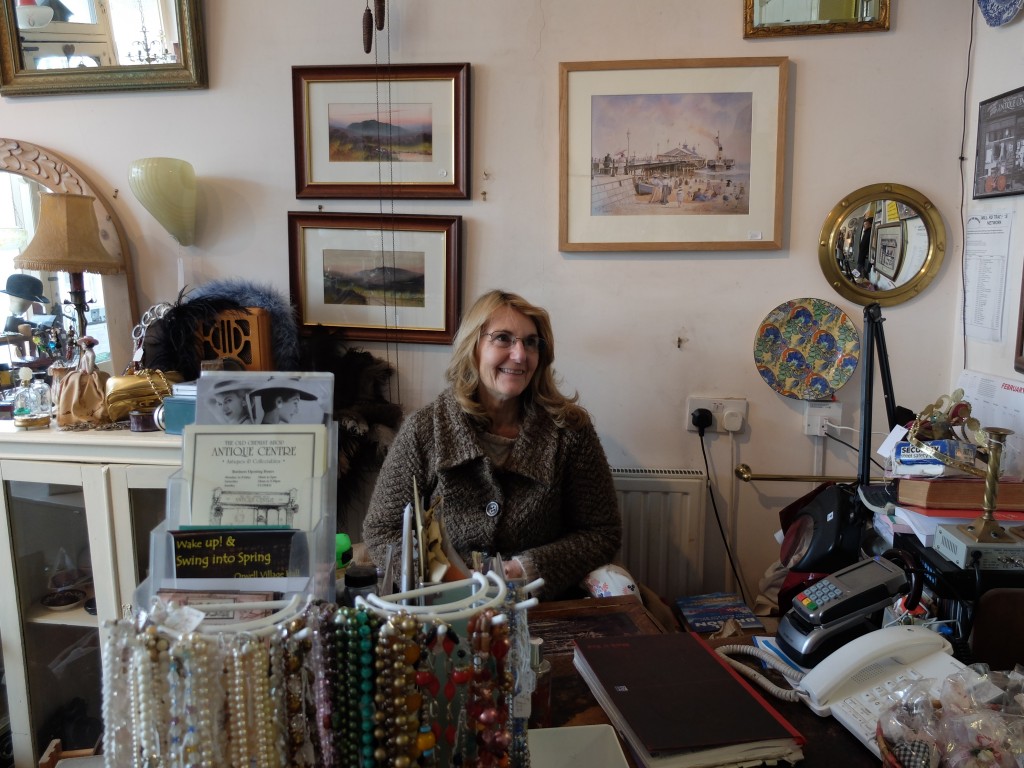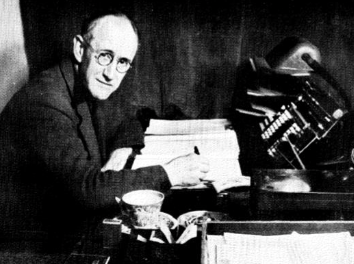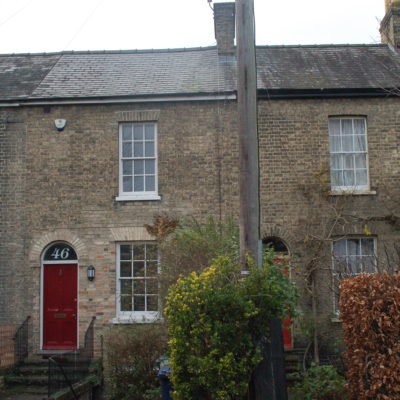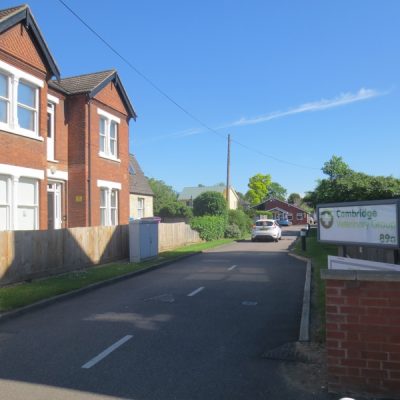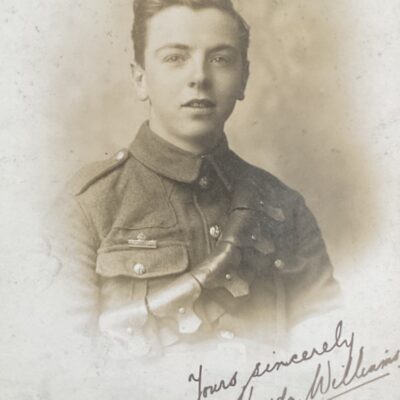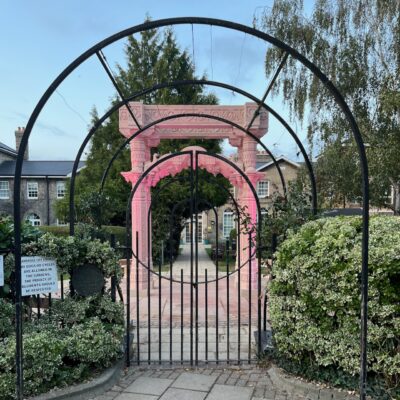Search by topic
- archaeology
- architecture
- bricklayer
- Building of Local Interest
- carpenter
- church
- crime
- dressmaker
- fire
- Great Eastern Railway
- listed building
- medieval
- oral history
- Public House
- Rattee & Kett
- Religious House
- Roman
- scholar
- school
- Then and Now
- tudor
- women
- work
- world war one
- world war two
Search by text
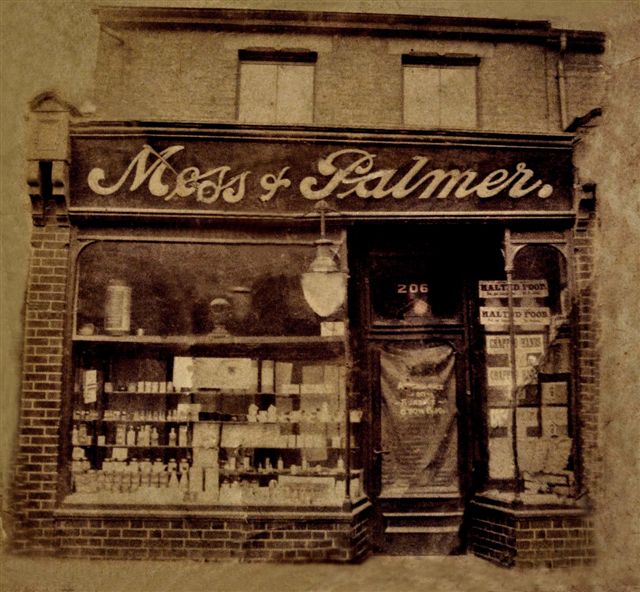 Courtesy of Cambridgeshire Collection
Courtesy of Cambridgeshire Collection206 Mill Road
The old chemist shop
No. 206 is located in Romsey Town on the South side of Mill Road, next to the passageway to Hope Street Yard. Architecturally, it retains many original features which have survived for over one hundred years and its antiquated physical appearance adds something to the character of Mill Road. The building has been occupied by the same family for three generations – for two it was a pharmacy and since 1994 it has been an antique shop.
Read the complete report (PDF)
Did You Know
The building is classified as a ‘building of local interest’ by the local planning authority (Cambridge City Council 2014).
It was the dying wish of John Palmer (1913–2003) for his funeral cortège to travel at 70mph. Cambridge Funeral Services honoured his request in a trip down the M11.
In 1907 a Polish Jew named Harris Norman who boarded at No 206 left £12,000 in his will to be split between Addenbrooke’s Hospital and the London Synagogue. His landlady, Mrs Calcott, sold the entire house to chemist, Ernest Moss, in the same year for £377.10 which shows just how large this legacy was at the time.
Harris Norman’s original will was found in the lining of a hat lent to his friend, William Wall, a hairdresser at 171 Mill Road.
Timeline
1881 – land bought by James William Jasper, carpenter
1886 (or earlier) – Melville House built, occupied by Jasper and family as a private dwelling
1898 – Emily Calcott, retired lodging house keeper
1907 – Ernest William Moss, chemist
1909 (or earlier) – converted into pharmacy, Moss & Palmer
1911 (or earlier) – occupied by James Marsh Palmer and family
1911 ? – pharmacy changed name to J. M. Palmer
1929 – Palmer family moved to Hope Street, becomes commercial property only
1946 (or earlier) – son John Palmer took over business
1993 – Pharmacy closed and reopened as Antique Centre
2000 – two storey rear extension added, upstairs flat let as No. 206a
2011 – further ground floor extension at rear
Building Description
Number 206 Mill Road is a brick-built end-of-terrace, two-storey building with shops either side and opposite. The building comprises, on the ground floor, four rooms currently used as a shop. This provides access to the first floor which is let by the current owner as a flat. The shop front dates back to c.1907‒10 when the premises were first used as a pharmacy. The shop front has distinct green tiles beneath two large mahogany framed windows. A mahogany framed door stands between the windows. The frontage has undergone few alterations since its original construction. To the back of the property is a garden and a two-storey extension. An original door with coloured glass remains in the front ground floor room near the location of the original staircase which has since been removed.
Moss and Palmer (chemist shop)
On 2 April 1902, Ernest William Moss and fellow chemist James Marsh Palmer went into business together opening a pharmacy at 210 Mill Road (BLD’s café in 2015). Mr Moss already owned another chemist shop at 121 Newmarket Road, which he continued running whilst James Palmer managed the new business. In 1907 they bought No. 206, refitted it for use as a pharmacy – using some of the fitments from No. 210 – and by 1909 had moved the business entirely.
By 1911 Palmer was living at No. 206 with his wife Jennie, his daughters Audrey and Patricia, and a domestic servant.
In 1929 or 1930 Palmer and his family moved out of what must have been cramped living quarters for a growing family at No. 206 Mill Road (there were only three rooms upstairs) and into No. 2 Hope Street (Hertford House), conveniently situated around the corner from No. 206, from where he continued to run the pharmacy.
Herbert John Palmer (or John Palmer as he preferred to be called) was born in Cambridge on 7 November 1912. He attended the County School, served an apprenticeship with his father from August 1931 – September 1933 and qualified as a chemist in 1936. During World War II he served in the Royal Navy.
In 1948 John Palmer married Mollie Wareham whom he had met on the road to Fulbourn whilst out on a cycle ride. He had a house built in Queen Edith’s Way for him and his family and when his wife died of cancer in 1954 his sister moved in to help care for his two daughters.
When Palmer retired in December 1993 he sold the contents of his shop to the Co-op Pharmacy on Mill Road. His daughter, Tansy Tucker then took over the shop and set it up as an antique shop. John Palmer died on 20 July 2003 aged 90. It was reported in the Cambridge News that it was his dying wish for his funeral cortège to travel at 70mph.
The Antique Centre
The shop area today comprises the entire ground floor. As well as selling antique furniture, collectibles and bric-à-brac Tansy also hires out theatre props and vintage costumes. The upstairs area of the premises is let as a flat.
The Will in the Hat
Harris Norman was born in Poland and according to one newspaper report came to England from Pisa where he was known as Paul Hirsch. He travelled to England with jeweller Simeon Harris who, after Norman’s death, described him as a ‘very mean man; he would not pay a penny to go home in the ‘bus even when his legs were bad.’ From 1851 he had lived in Ely, Gt. Coggeshall, Cambridge, Bishopsgate and possibly also Colchester (under the name of George Norman). By 1891 he had retired to East Road, Cambridge and then from 1901 until his death in January 1907 he lodged at No. 206. He appears to have remained a bachelor and despite his wealth always lived as a boarder or lodger.
Harris Norman made his fortune ‘by selling cheap jewellery and investments’ and ‘by crafty speculation and miserly habits.’ It was reported that his relatives, with whom he did not get on, were always ‘bothering’ him for money and he had no intention of leaving them anything after his death. His friend William Wall suggested instead that he leave his money to Addenbrooke’s Hospital since Norman commented that once ‘he had received very kind treatment’ there. Wall then drew up a will for him, copying the basic text from his wife’s will. Norman had poor eyesight and could not see well enough to sign his name but Wall suggested he make his mark with an ‘x’ which he did.
This is the last will and testament of me Harris Norman, bachelor, resident at 206 Mill-road, Cambridge, in the county of Cambridge. I give and bequeath the whole of my property whatsoever and wheresoever, to be equally divided between the two establishments named herein. To Addenbrooke’s Hospital, Cambridge, and the London Synagogue for the poor and needy Jews, and I name the Governor of the Hospital sole executor.
In the summer of 1906 Norman brought a sealed envelope to Wall saying it contained his will. It was then given to their friend, Mr Hurrell, who locked it away in his safe. Wall had kept a copy of the will and when, after Norman’s death, the solicitors asked to see the original, the sealed envelope was opened. All it contained however was a set of instructions for writing a will. The stories then go on to report that Wall eventually came across the original will in the silk lining of an old hat that had been lent to him by Norman when he attended a funeral. Wall had once tried to return the hat to him but Norman said he might as well keep it as his landlady complained that it was in the way. When the existence of the will came to light Norman’s half-brother Maurice Kutner, a pauper from Whitechapel, contested it on the grounds that it was a forgery. The court case that followed was widely reported throughout Britain (reports appear in newspapers from as far away as Cornwall and Dundee) and it was finally decided that the will was valid.
More Information
Contribute
Do you have any information about the people or places in this article? If so, then please let us know using the Contact page or by emailing capturingcambridge@
License
This work is licensed under CC BY-NC-SA 4.0








